a not fake theory of everything v1
abstract: in this ~500 word1 introductory paper, i present a not fake theory of everything2. i start by extending christopher alexander’s definition of life as a status and attribute. i then posit that life is the physical interface of consciousness, referencing giulio tononi’s informational theory of consciousness and modeling consciousness as a system that integrates information. i describe life as a function of ross ashby’s law of requisite variety and conclude by rigorizing god as the highest geometric point within a context window. in doing so, i provide scale-free symbol grounded definitions of consciousness, life and god that (a) require no scientific, philosophical or religious priors, (b) explain what’s working, not working and why across across systems of all organizational scales including activities of daily living and (c) does not ask the reader to make any fantastical or non observable conceptual leaps.
general disclaimer3
‘the real performance enhancing drug is giving a damn.’— overheard at a diner, 36th street’
‘can science answer moral and ethical questions? from the time of the enlightenment philosophers have speculated that the remarkable advances of science would one day spill over into the realm of moral philosophy, and that scientists would be able to discover answers to previously insoluble moral dilemmas and ethical conundrums. one of the reasons ed wilson's book consilience was so successful was that he attempted to revive this enlightenment dream. alas, we seem no closer than we were when voltaire, diderot, and company first encouraged scientists to go after moral and ethical questions.’ — michael shermer
the fictional character in this image is biologically alive…
but he feels dead4. he’s biologically alive, but not full of life. this image, which consists of information that is not integrated5, is lifeless. he’s doomscrollingish, the peak of information disintegrated (try it and observe how you feel; dead).
if he’s biologically alive but he’s also dead, then life is both a biological status and an attribute. and with this observation we dampen the ‘what is the meaning of life’ question by showing that life is a meaning — life is an attribute6. the big idea is that life is real.78
in contrast to our wall-e fictional character, this guy is full of life as an attribute and is biologically living as a status.9
the pup is integrated with his environment, the wall-e character is subjugated by it.10
the garden is information that’s been integrated. the stone was crafted by man. over time, nature did its thing — a vine is grown, rocks acquire streaks, fade or darken or get mossy — and integrated the information (the stone wall and it’s environment).
the nature doing it’s thing symbol grounds consciousness; a general system that integrates information. the unviewable force behind the fitting (information11 integration12) that creates life.13
life, as both a status and attribute, is the physical14 interface of consciousness.
another example. the perfect grass field photo below is full of life. all information is integrated.
if we zoom out of the above photo below, we see less life because the information is simply not integrated (it feels dead!)
if you take the perfect grass field and place the electric pole with a bunch of wires15 in it, the information is not integrated; there is less life because it does not fit. if something does not work, it’s because it fails to produce life16, because it lacks the requisite variety17 of integrators to integrate information.
what we know is that over time however, via consciousness, the information gets integrated naturally into it’s environment. the tower becomes rusty, vines grow, wires fall, etc. like sam altman’s dream garden.
the photo below contains information that was man made that has been integrated fully.
in contrast, this photo represents information that has not been integrated.
the minimal definition of god18 is the highest geometric point within a context window. ‘oh my god i forgot to shut off the teapot.’ the highest relative point of the largest context window is the general conceptual space for a general system that produces life. god is not present in the below or above photo because their is no life19.
in summary, (1) god is the system that produces life, (2) life is the physical interface of consciousness, (3) consciousness is the system that integrates information and (4) life is a status, attribute and subject to the law of requisite variety.
thanks for reading!
not counting the footnotes, so maybe i cheated a bit ;-)
this theory of everything is a theory of everything, on the grounds that the idea of a theory of everything is unproductively excluding. perhaps poetically, the main idea in our theory of everything is that life is a function of law of requisite variety; when things are not adequately inclusive things are limited in their ability to produce life. the idea of a theory of everything as a concept lacks the general variety to produce the amount of life that one would expect out of such a grand concept like a theory of everything.
if we increase the variety of a theory of everything it’s not unreasonable to see that a theory of everything should account for all of the messiness and practicalities of everyday life. if we further unbuckle the straps, we see theory of everything’s everywhere. the physics unified field equation theory of everything is a theory of everything within a context window, no different than a constitution or a company pursuing artificial general intelligence is an applied theory of everything within a context window. the magna carta (1215), the declaration of independence (1776), the universal declaration of human rights (1948) — perhaps some of our most important theories of everythings.
the aim of our theory of everything is to offer a theory of everything that’s maximally inclusive; not to just answer being, existence, reality, and so forth but to set the broadest and most rigorous context window for the purpose of articulating a structure of collective sense-making. said differently, our theory of everything is a human coordination theory of everything by means of accounting.
‘we solve big problems by coordinating activities. conflicts between efforts cause friction and loss. coordination aligns activities and reduces conflicts. we give accounts to explain activities in terms of the collective. as the collective matures, its internal accounts become more systematic, increasing transparency and reliability. mathematical fields can be seen as crystallized accounting systems. arithmetic deals with the flow of quantities (finance). differential equations model dynamics (engineering). probability distributions handle likelihoods (game theory). calculus focuses on rates of change. topology examines space properties (network theory). the aim is to find a language and logic for the shape of collective sense-making, focusing on construction principles that lend themselves to decentralization, large scale coordination and true aligned accounting.’ — inspired/abridged by david spivak applied category theory; towards a hard science of interdisciplinarity
this document was created by an amateur, non-scientific aspiring entertainer. reader discretion is advised, and the ideas expressed here are not to be considered as professional recommendations or actionable in any context. the author makes no warranties, express or implied, regarding the content of this document. the author will not be liable for any loss, damage, or injury directly or indirectly caused by or resulting from your use of or reliance on any of the information provided in this document. the reader's understanding and appreciation of the content will, therefore, largely depend on their own experiences and perspective. all rights are reserved under maximum copyright protection. no portion of this document may be reproduced, distributed, or transmitted in any form or by any means, including photocopying, recording, or other electronic or mechanical methods, without the prior written permission of the author. any unauthorized use, duplication, or dissemination of this work, in part or in whole, constitutes a violation of intellectual property rights.
the cultural term to describe this phenomena is ‘zombie’
that is to say he’s not integrated with other biological life or non-biological life that has been integrated with biological life.
if this seems like a crazy claim, notice that we use this all the time in everyday language. samo burja’s live players framework is an example. some general sentences
"this party is so lively, it's buzzing with energy."
"her speech breathed life into the entire room."
"the city feels so alive at night with all the lights and sounds."
"that movie brought the story to life in such a vivid way."
"this garden feels lifeless without the flowers in bloom."
the quality of our society is the quality of our invisible infrastructure. our key institutions, governments, providers and overseers of said infrastructure have concluded that society is to be organized under two metrics: (1) life expectancy (2) gdp, gross domestic production. said differently, the goal of society is for people not to die, and the consumption or production of goods, is how society measures life. life, however, is an objective attribute of all material (and abstract) systems.
life symbol grounds what exists and what is good. intelligence is the ability to exist or to create life. ethics is a reflection of alignment with god; humanity’s collective efforts to minimize waste while making balanced decisions between various conflicting factors. these include the natural tension between the continuation of life and the avoidance of biological death, the balance between human rights and the rights of other living beings. evil is general waste, or the reduction of biological life for artifical life.
‘it is undeniable – at least as far as our feeling is concerned, that a ... breaking wave feels as if it has more life as a system of water than an industrial pool stinking with chemicals. so does the ripple of a tranquil pond. a fire, which is not organically alive, feels alive. and a blazing bonfire may feel more alive than a smoldering ember.’ — christopher alexander
the power of this environment strips away basic human rights. unlike the dog, the wall-e character lacks the mechanisms for expression and movement; running, or engaging in playful or childlike movements. he may be legally permitted, but the environment makes this socially unacceptable or "illegal" in practice. we observe that in our current environment objects create environments that normalize behavior. (e.g. it’s socially illegal to start singing in a restaurant or partake in many of the physical movements a dog is afforded on a beach or somehow ethically wrong to eat expensive chocolate while drinking coca-cola, and just as wrong to listen to popular music on headphones during a beautiful snowfall*). (the last two examples are not mine, but i cannot find the reference.)
giulio tononi’s information integration theory of consciousness is what we use and it posits that consciousness arises from the integration of information within a system, where the various components interact in a coherent, meaningful way. according to this theory, consciousness is not merely a byproduct of individual information pieces, but rather the result of how information is harmoniously integrated and organized within a given structure. this integration creates a unified experience, where disparate elements come together to form a holistic understanding or awareness. the more effectively information is integrated, the higher the degree of consciousness that emerges, as it enables a system to function in a more organized and purposeful manner.
when we model consciousness as information integration and the physical interface of consciousness as life, we can then provide a flat hierarchy for modeling all sorts of phenomena/objects within a small language. the internet, for instance, can create or reduce life through its ability to connect people, but the general units of distraction lead to a degree of missing integration. alcohol can be modeled as information distortion, which allows for a more pronounced presentation of other information that is integrated. one of the deepest spiritual practices you can engage in is being a good host, because the degrees of information integration are so strong. authenticity is a word for real is a word for information integrated. coordination is information integration. a zombie is a cultural word to describe a human with information that is not integrated. a soul is a holistic model of a person under a context window that focuses on the information at deeper levels of integrated. meditation is about integrating information. hell is a state of complete information disintegration, care is the act of taking the time to integrate information. design is about integrating information to complete a job to be done. translation occurs when two different context windows can integrate, a theory of everything is a theory of integrating all information, art is a function in which you have produced something that has deeply integrated with some context window (typically yourself or your environment). a community is a group of people whose information has been integrated the more so the stronger the community. love is a fundamental degree of information integrated, resonance is a function of the kind and degree of information integration and flow state is the increasing function of the mutual information (strength of the connection) between desired end states and means of attaining them. paranormal phenomena comes from different degree of information integrated
‘... the ‘life’ which i am talking about also includes the living essence of ordinary events in our everyday worlds ... a back-street japanese restaurant ... an italian town square ...an amusement park ... a bunch of cushions thrown into a corner window-seat ... this quality includes an overall sense of functional liberation and free inner spirit. above all it makes us feel alive when we experience it....it is undeniable – at least as far as our feeling is concerned, that a ... breaking wave feels as if it has more life as a system of water than an industrial pool stinking with chemicals. so does the ripple of a tranquil pond. a fire, which is not organically alive, feels alive. and a blazing bonfire may feel more alive than a smoldering ember.’’ — christopher alexander
‘life is a vitalizing property of all matter. life is in and of all matter. man's concept of life is not logical. man conceives life to be a property apart from matter, quickening compound elements of inorganic matter into living, functioning, organic beings. man defines organic matter as that in which life begins to function, imbuing it with vitality and intelligence, defines inorganic matter as those elements or compounds of matter in which there is no life and in which there is no vitality nor intelligence. man conceives life as spontaneously generated in matter at favorable temperatures and under favorable conditions. life is in and of all things from beginning, always and forever. life is eternal. life is in and of all inorganic as well as all organic matter. life is in and of all of the elements and atoms of the elements and the compounds of the elements.’ — walter russell, universal one
‘... we recognize degrees of life, or degrees of health, in different ecological systems ... one forest more tranquil, more vigorous, more alive, than another dying forest ... life occurs most deeply when things are simply going well, when we are having a good time, or when we are experiencing joy or sorrow – when we experience the real...in historic times, and in many primitive cultures, it was commonplace for people to understand that different places in the world had different degrees of life or spirit. for example, in tribal african societies and among california indians or australian aborigines, it was common to recognize a distinction between one tree and other, one rock and another, recognizing that even though all rocks have their life, still, this rock has more life, or more spirit; or this place has a special significance.’ — christopher alexander
physical implies material in the largest sense — that is to say it includes general abstract systems. some abstractions have more life than others.
what we observe is that technology is artificial time (beginning with the storage of food) under a definition of time that says time is a dimension/attribute that marks motion-caused division — intervals between the sequences of repeated events. under a model of speed as the time consumed relative to distance, hence the observed imbalance.
christopher alexander's observation that life is a property of the built environment was less possible to achieve in pre-industrial times because we simply did not create lifeless things in the same way. before the industrial revolution, most objects and structures were made by hand and were inherently tied to human life and activity. the distinction between living and non-living elements was not as pronounced, as the things we created were more organic and interconnected with their surroundings. it wasn't until mass production and mechanization emerged that we began to produce objects and environments that felt disconnected from human presence, making alexander's concept more relevant in the context of modern design.
a basic example of life explaining what works and does not work is the airplane system. as a mechanism for bringing people together and enabling to see other parts of the world and coordinate with people all over, the airplane system is a life enabler. airplanes are safe: the airline has low accident rates: it is the safest mode of transportation. airplanes also have high on-time departure rates. recently however the airplanes are less safe. this can be practically chocked up to (a) new corporate leadership not being as integrated into the organization as previously leadership and (b) the day to day workers being less integrated into the day to day operations as a function of how many consecutive units of 15 minutes of uninterrupted time they have in the day. when it comes to flying their more than safety and keeping a schedule. the airline industry's environmental impact and the increasing demand for air travel, particularly in emerging economies, is expected to worsen. it is estimated today to be responsible for around 2-3% of global co2 emissions. the actual design and experience of airports and airplanes are not full of life; the people who work there surely bear the brunt of this as much as travelers. flying is a pretty dead experience. noise pollution (absence of information integrated) becomes a problem for everyone. people who live within six miles of an airport have higher levels of asthma and heart problems. airports and aircraft operations undeniably disrupt local ecosystems and wildlife. so we have with air travel a system whose core function works from a safety perspective and adventure/familial life enablement—but at the cost of reducing life in various ways. we are now positioning ourselves towards being able to model the spiritual cost (reduction of life) and also able to observe that the general problem space as always one of information that’s disintegrated.
ashby’s law of requisite variety states that for a system to be stable, the variety in the controller must match or exceed the variety present in the system it seeks to manage. variety refers to the number of possible states a system can take, meaning that the complexity of the controller must be sufficient to handle the complexity of the environment. a mismatch in complexity leads to ineffective regulation or instability.
the question do you believe in god fails to recognize that god is an attribute, not a binary thing. god is an objective, measurable attribute inherent in all systems — an observation of a highest point in the context window (some information space within a a coordinate system or plane with a bounded region of data or knowledge). (e.g oh my god i forgot to turn off the teapot).
the highest god is the highest point in the highest context window, the grand organizing design. god is/has a single consciousness, demarcated by its ability to produce a world full of life via some design that apparently outputs the greatest variety, the greatest order with as few rules as possible. god as the grand organizing design is the most inclusive (most variety), and thus the largest creator of life. said differently, life is god’s creation and life itself is a creative act; the connection of things to create other things (variety). the finite, matter (life is matter, aka life is what matters), is a limited expression of the infinite substance that is god (less poetically life is the physical grounding of information integration; consciousness)
to say that their is no life and god is not present are exaggerations. it’s more like god is dim because there is little life.


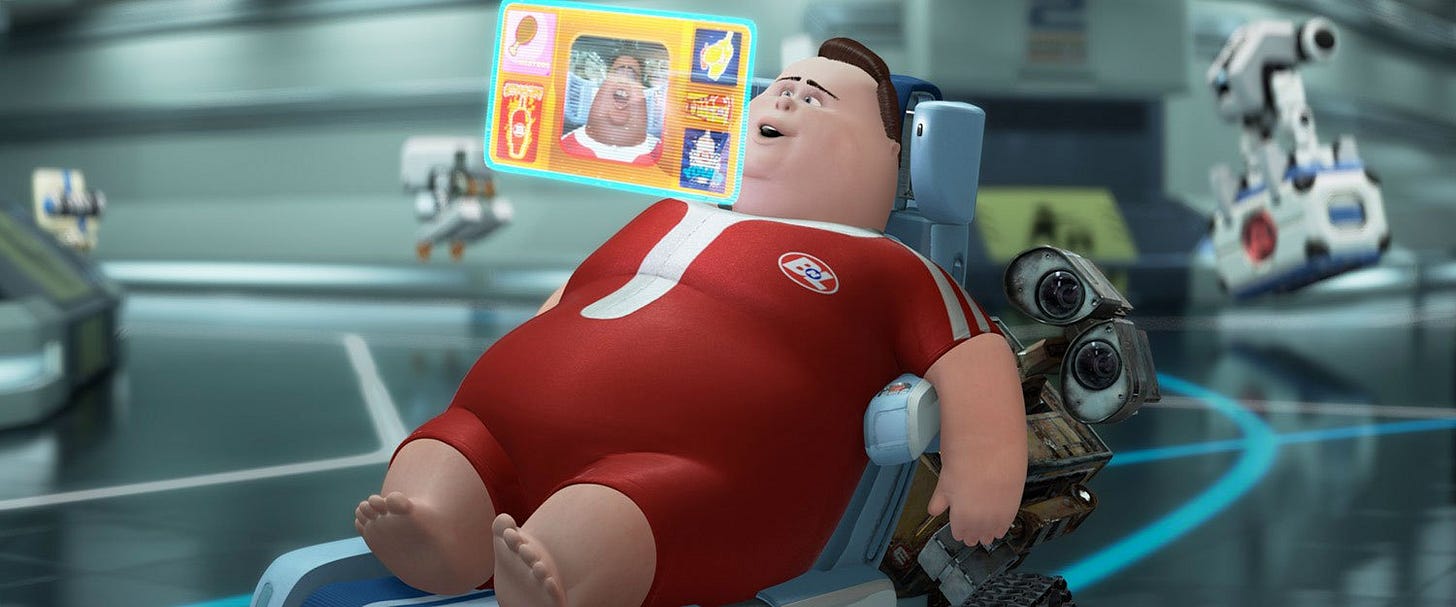

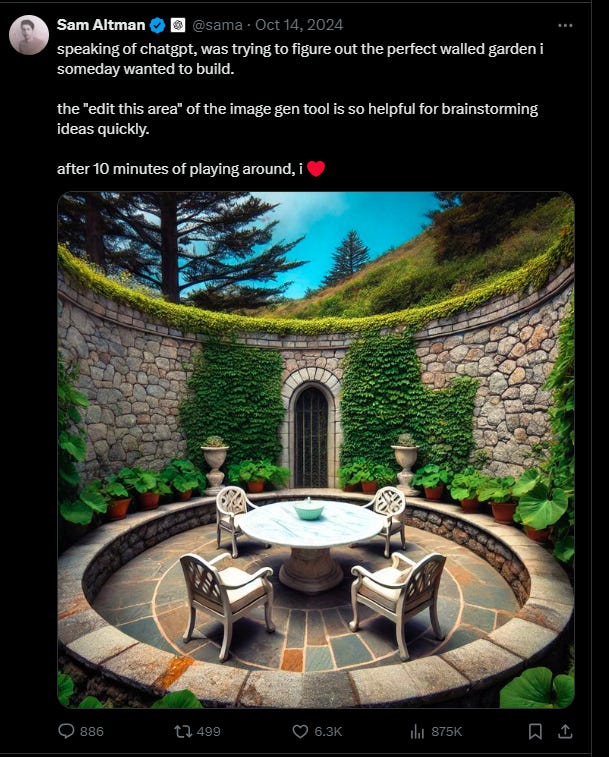

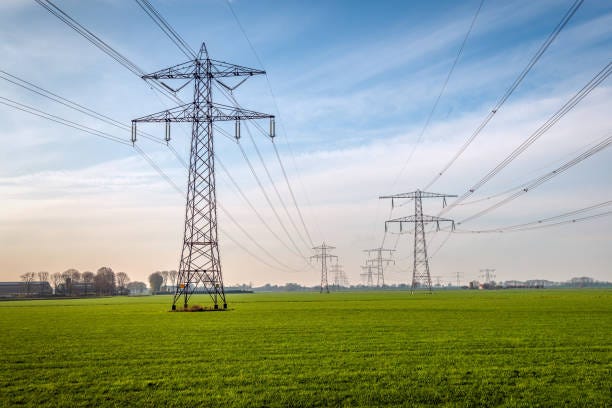
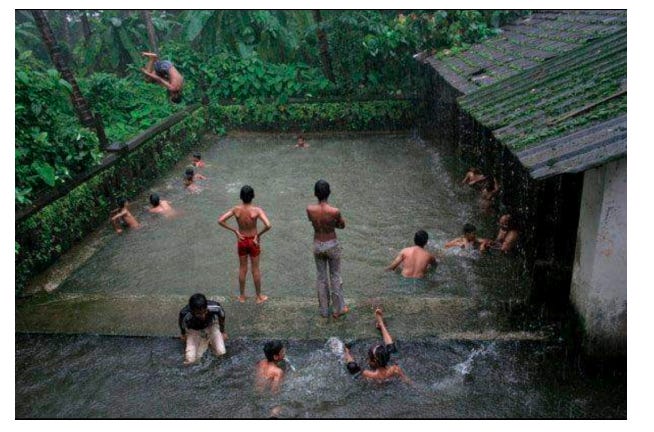
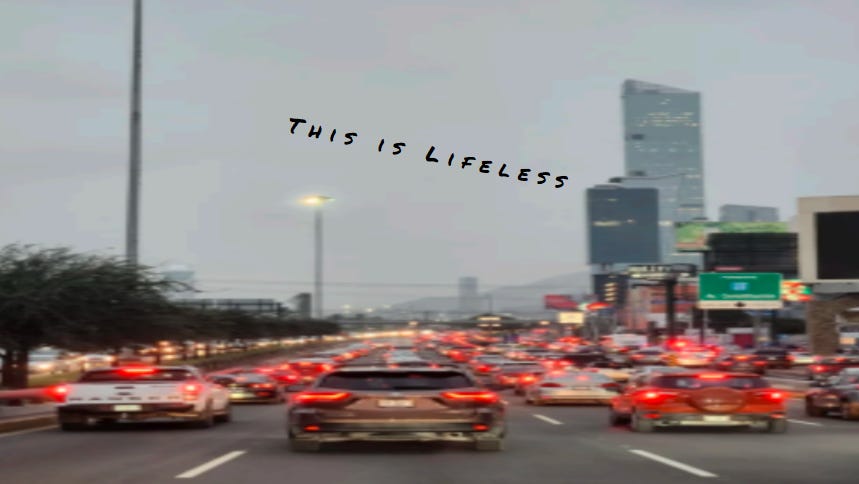
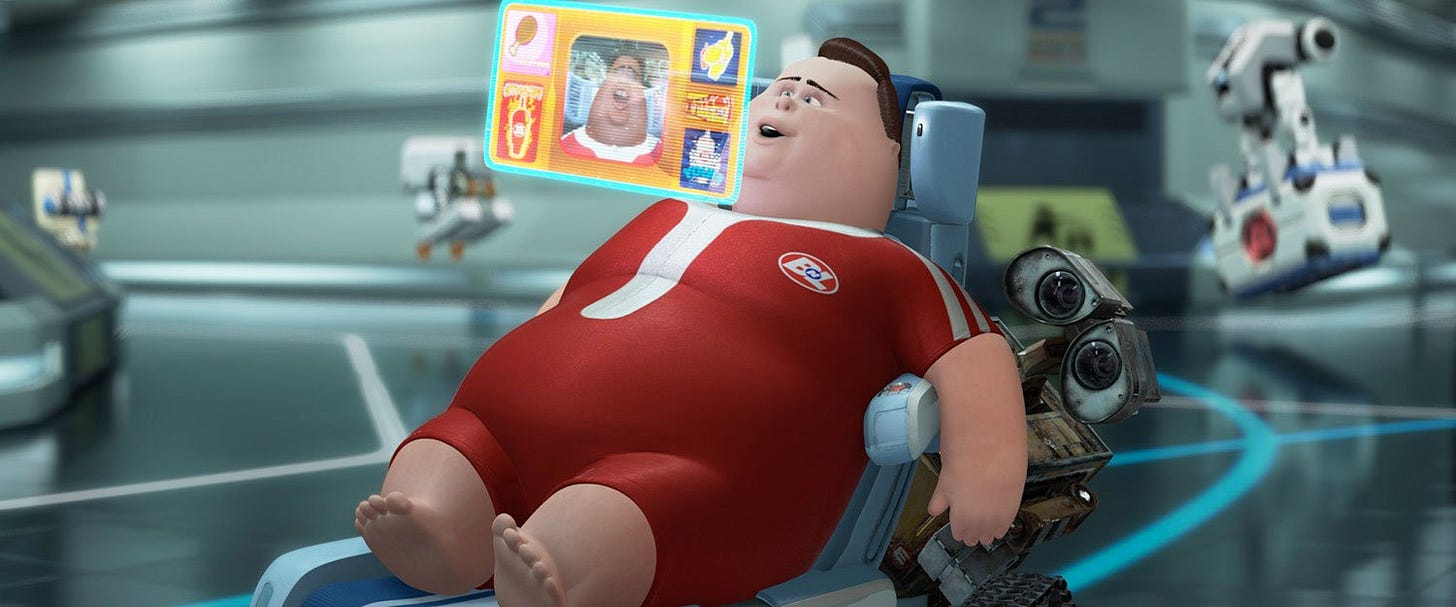
Looking forward to v2.